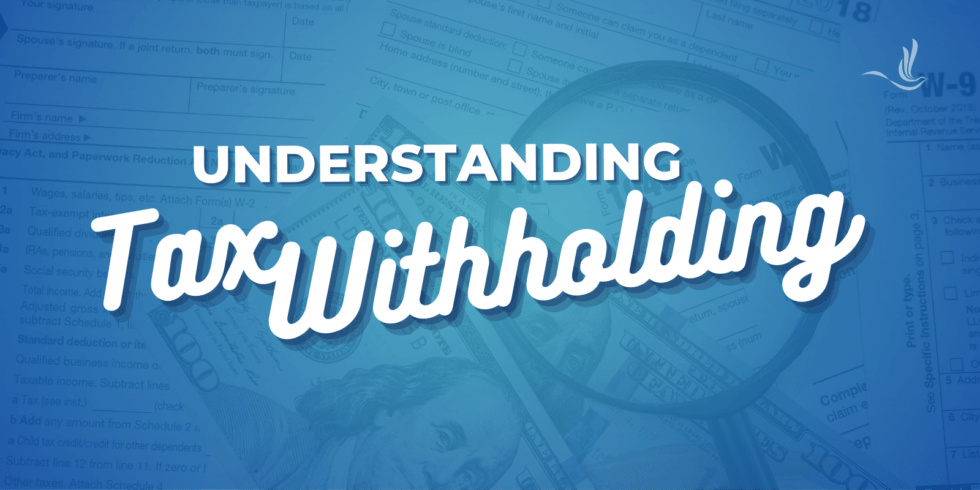
Tax withholding is a concept that many individuals encounter throughout their lives, whether as employees, freelancers, or business owners. Withholding too little tax from your paychecks can result in a tax bill during tax time, while withholding too much tax can result in smaller paychecks than necessary. That being said, understanding tax withholding is crucial because it directly affects your income, tax liability, and financial planning. Here is a breakdown of withholding.
What is tax withholding?
Withholding is essentially the amount of income tax that your employer deducts from your paycheck. This amount is then sent to the IRS on your behalf. This is because the IRS requires taxes to be paid as income is earned. Withholding allows us to do this easily and efficiently without risking owing a large tax bill later. How much income tax is deducted is up to you as withholding can be adjusted at any time. However, there are other types of taxes that are deducted from your paycheck including Social Security tax, Medicare tax, and state or local taxes.
How does tax withholding work?
When you start a new job, your employer will ask you to fill out IRS Form W-4, Employee’s Withholding Certificate. This form will ask for information, including your name, address, social security number, and filing status. If you have dependents, multiple jobs (including your spouse’s), or other adjustments, you can also note them on the form. Once you sign and date the form, you can give it to your employer, and they will withhold taxes accordingly. Remember, a new Form W-4 can be submitted at any time. In fact, a new W-4 should be submitted each time you experience a life change that requires more or less taxes withheld. For example, having a child, getting married, or getting a second job might require your withholding to be updated.
How does withholding work for self-employed individuals?
If you are self-employed or do contract work, you do not have an employer to withhold taxes for you, but this does not mean you are exempt from paying income taxes. Instead, you are required to pay quarterly estimated taxes. Figuring out how much to pay can be tricky. You can use IRS Form 1040-ES to calculate your estimated tax payment and pay this amount to the IRS through check, cash, money order, credit card, or online. Four separate payments are due throughout the year according to a quarterly schedule. For 2025, these due dates are:
- April 15
- June 15
- September 15
- January 15, 2026
There are a few exceptions to this. You may pay all of your estimated taxes early. You are also not required to make a payment until you earn income that will result in owed tax. It’s crucial to make any necessary payments because if you do not, you may be hit with penalties.
Why is withholding important?
As you can see, tax withholding is extremely important because it directly impacts your income, tax liability, and financial planning. If you’re still not sure if you are withholding the correct amount, think back to your most recent tax refund or tax bill. If you had to pay a large tax bill, you likely need to increase your withholding to help minimize your taxes owed. However, if you got a larger than normal tax refund, you likely need to reduce your it. While you might think getting a huge tax refund is ideal, this is essentially an interest-free loan on your own money. That extra money might have been better spent during the year. Tax withholding can get complicated, but Optima can help.
If You Need Tax Help, Contact Us Today for a Free Consultation